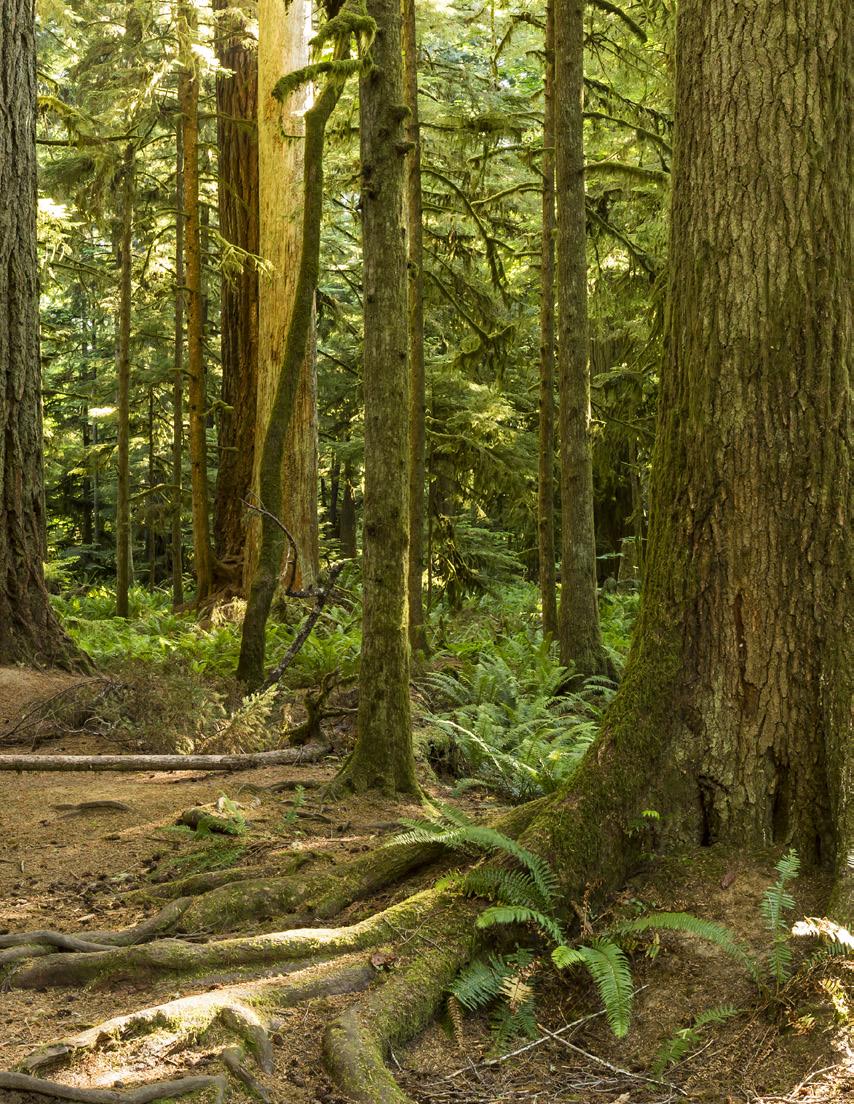
3 minute read
Seven generations of foresters
The Hungarian roots of this family tree span two centuries
You might say that forestry runs in the blood of the Tóth/ Chipman family. The ancestors of Georgina Chipman (née Tóth) have been working in the profession dating back to the early 1800s. While Georgina pursued a pharmacy degree at UBC in the 1990s, fate decided that her family’s forestry lineage would be extended when she met UBC Forestry undergraduate Gordon Chipman (BSF’93, DFEN’01 (Diploma in Forest Engineering)).
Advertisement
The story of Georgina’s family connection to forestry begins in 1788 — the year of András Tóth’s birth.
András was born in the Kingdom of Hungary, as it was then called. Living in a largely agricultural society with little industry and the murmurings of social reform, András secured a career as a forester, managing likely hundreds of hectares of mixed agricultural, hunting and forested lands held by Count Antal Grassalkovich in the Region of Gödöllő, east of Budapest, Hungary from around 1810 to 1845.
During this time, the House of Habsburg, a prominent European dynasty, was losing its control over western Europe. Despite uprisings by the Hungarian citizenry, the Habsburg Empire held onto its brutal rule, leading to economic collapse and a state of neglect until the Hungarian Government resumed leadership in 1867. As a result of the instability and strife, András’s sons opted for careers in farming rather than forestry.
It was András’s great-grandson, József Tóth, born in 1869, who took up the torch. Graduating from the Hungarian Technical School with a degree in forestry in 1899, József went straight to work in the Gödöllő Forest Region until his retirement in 1934.

Filling in one of the missing generations between András and his great-grandson is the father of József’s wife, Mária Tóth (née Martin). Tamás Martin was the chief forest ranger for the Isaszeg Forest, near Budapest, sometime in the mid1800s. However, family records were destroyed during the Second World War, leaving little in the way of documentation to retrace his exact years of service. What is known is that, in 1907, Tamás became a grandfather.
Mária and József’s son, Gyula Tóth, studied forestry in Esztergom, a port city on the Danube River in northern Hungary known for its ornate cathedrals. Graduating in 1927, Gyula followed in the footsteps of his great-great-grandfather, András, by working in the Gödöllő forests before being transferred to the Miskolc Forest Region in north-eastern Hungary in 1938. Managing narrow-gauge forest railway systems was a chief enjoyment in his illustrious career, which included being recognized by the Hungarian government as an Outstanding Forestry Worker of the Ministry, among many other accolades.
Our tale takes a sombre turn following the birth of Gyula’s son, Géza Tóth. By the middle of the 1940s, Soviet Russia occupied several countries in central Europe, including Hungary. During this time, thousands of people were rounded up and thrown into the Gulag forced labour camps. Among the detainees was Gyula. Separated when Géza was only eight years old, it would be half a decade before father and son were reunited.
Despite the hardships and fear spreading throughout the country, Géza was able to attend the Faculty of Forest Engineering in Sopron, located in the north-west of Hungary, in 1955. One year later, invading Soviets forced hundreds of students and professors to flee across the border to Austria.
Learn more about the history of the Sopron Division of the Faculty of Forestry at forestry.ubc.ca/about/our-history/sopron-story

In need of a new home and institution to complete their studies, Géza, along with 200 of his forestry colleagues and 14 faculty members, embarked on a long voyage across the Pacific Ocean at the invitation of the Canadian Government. UBC Forestry opened its doors to the Sopron school, creating a special degree program to help the non-native speakers adapt to their adopted country.
Géza graduated with a Bachelor of Science in Forestry in 1960, and began his 35-year career as an RPF with the BC Forest Service in Victoria, Kamloops and Prince Rupert forest regions. In 1967, Géza met Diane Osborn (BScPhysio’65). The couple were married two years later. They gave birth to Georgina in 1971, which takes us back to the beginning of our story.
Gordon spent much of his childhood in the backwoods of BC’s Chilcotins, “talking with squirrels,” he says, and listening to stories from his father and maternal grandfather about working in the bush at harvesting operations. Gordon first studied forestry at Malaspina College, and cut his teeth working for the Likely Forest Services in the Cariboo Region of BC, as well as developing cut blocks, living in float camps and traveling in helicopters, boats and float planes around Prince Rupert.
Friends invited Gordon to the UBC Forestry Undergraduate Society’s famed Coconut Parties, and these connections, along with his strong desire to expand his skill set, convinced him to enrol at UBC. Gordon received his RPF in 1995 and worked as a professional forester with Jacobson Brothers Forest Products – which later became Riverside Forest Products and then Tolko Industries – in Williams Lake, BC. Following this, Gordon managed the 80,000-hectare Esk’etemc Community Forest near Williams Lake where he helped establish a district heating system that uses debris piles from the local forest.
In 1997, Gordon and Georgina welcomed Stephen Chipman (BSF’21) into their lives. Just like his father and ancestors, Stephen was drawn to the woods. He worked as a firefighter with the BC Wildfire Service and recently graduated from UBC Forestry. Stephen spent his past two summers as a forester and engineer-in-training with NorthPac Forestry Group in Terrace, BC, where he is currently employed. Only time will tell what lies ahead for future generations.










